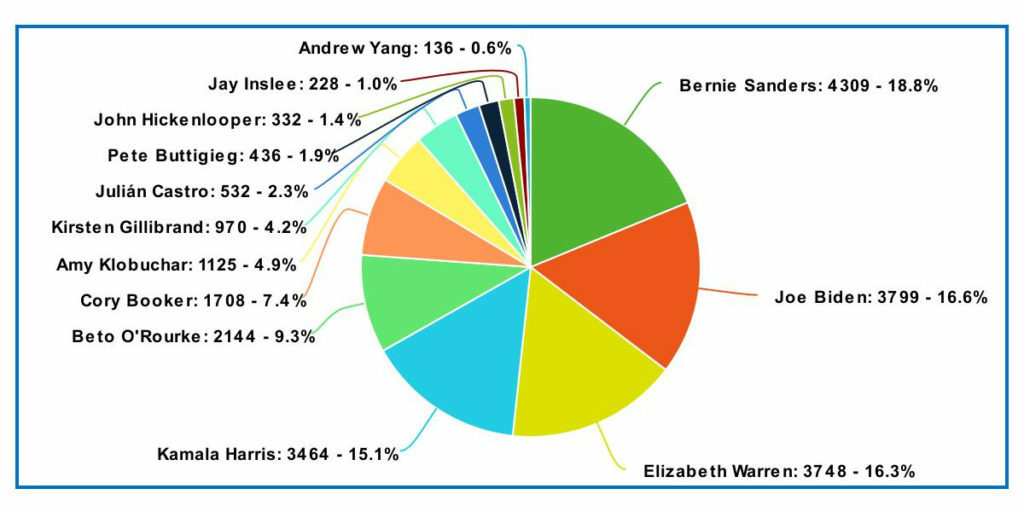Curious about how much media coverage the Democratic presidential hopefuls were getting, I asked FAIR intern Teddy Ostrow to do a count, using the Internet Archive’s TV News Archive, of candidate mentions in 2019 (1/1/19–4/11/19). He used the list of declared or exploratory candidates on Wikipedia, plus Joe Biden, since he leads most national polls of the race.
Somewhat to my surprise, the results tracked fairly closely with candidates’ positions in the polls. When one candidate’s mentions are divided by the total of all candidates’ mentions, the resulting percentage generally resembles the polling average published by Real Clear Politics (3/14/19–4/7/19):

The one candidate who’s getting a much smaller percentage of TV news mentions than his average in the polls is Biden, who got 17 percent of the mentions and is averaging 31 percent in polls. Of course, Biden has not announced he is running, and further does hold a current office that might keep him in the news. Bernie Sanders also is covered somewhat less than his polling numbers: He got 19 percent of mentions, and averages 21 percent in polls. Andrew Yang, the least covered of the candidates who got more than a tiny amount of coverage, got 0.6 percent of mentions with a 0.8 percent polling average.
All the other candidates are getting a share of coverage equal to or greater than their share of support in polls. The biggest gap was for Elizabeth Warren, who got 16 percent of mentions and averages only 6 percent in polls. Cory Booker, Amy Klobuchar and Kirsten Gillibrand also got a substantially larger share of coverage compared to their poll averages.
A couple of caveats are crucial. One is that the relationship between how much a candidate is covered and how much polling support they have can obviously go both ways: News managers may or may not decide how much to cover a candidate based on how much support they have, but voters are highly unlikely to express support for a candidate they’ve never heard of. Getting next to no coverage almost guarantees that a candidate will have little or no presence in polls—as the chart bears out.
The other thing to keep in mind is that all coverage is not the same; if coverage focuses on a candidate’s scandals, gaffes or perceived weaknesses, they may believe less is more. There is some research that suggests that female candidates, in particular, are being covered more negatively than the men (Storybench, 3/29/19).
Of course, whoever runs as the Democratic nominee for president will have to contend with the co-dependent relationship between corporate media and Donald Trump—which can only be strengthened by his running as an incumbent. With that in mind, it can only be encouraging that all the Democratic candidates together got more coverage—slightly—than Trump by himself, with 23,677 vs. 19,895 mentions.
Research and charts: Teddy Ostrow

